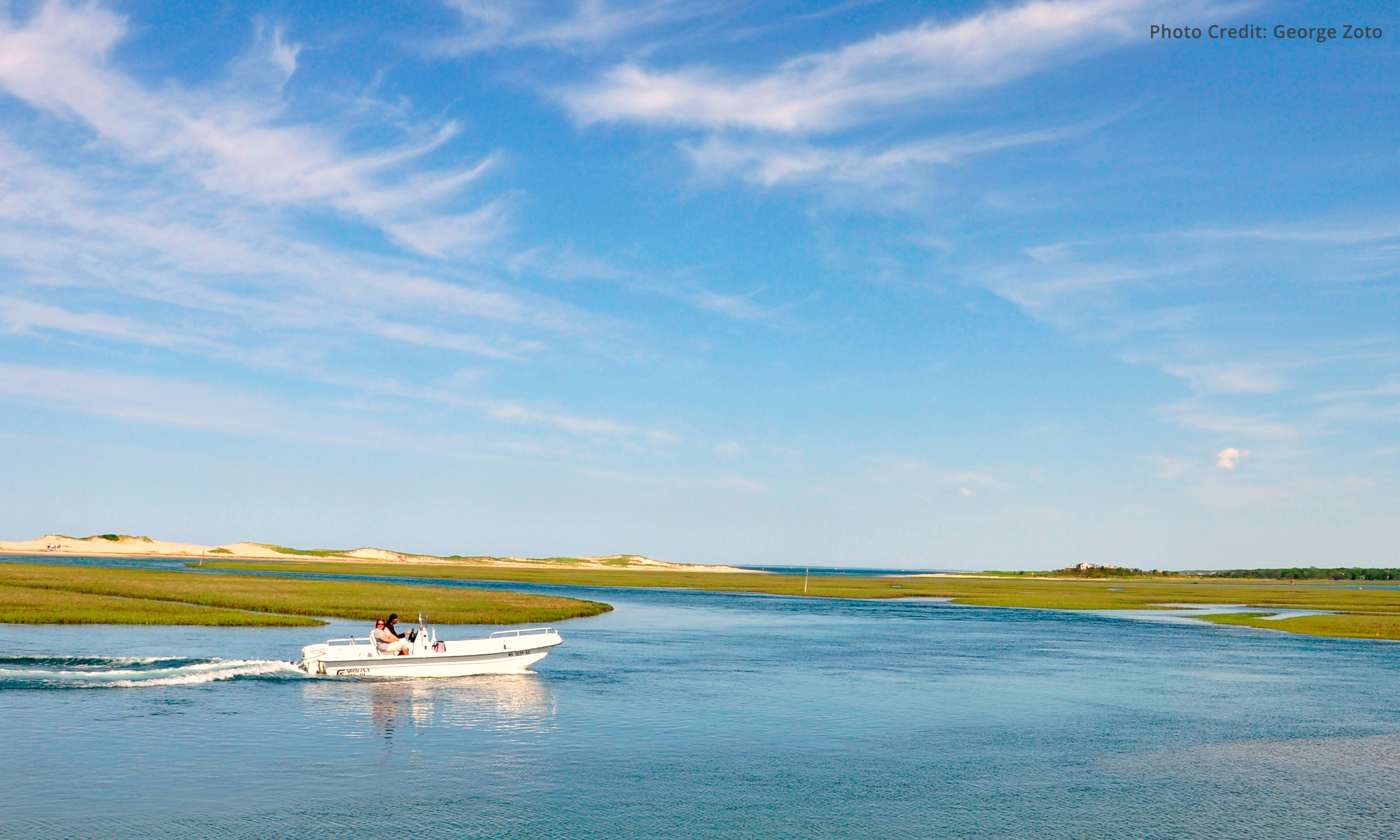States / Massachusetts
Massachusetts
Coastal Management
The focus is on managing coastal areas to increase resilience, with an emphasis on balancing environmental, economic, and human wellbeing. Mandated by the Coastal Zone Management Act, the two federal programs designed for this task are the National Coastal Zone Management Program and the National Estuarine Research Reserve System. Programs are administered, on the federal side, by NOAA’s Office for Coastal Management, in partnership with the coastal states.

State Programs
Coastal Zone Management
Massachusetts Coastal Zone Management Program. Established in 1978, the program is the lead policy, planning, and technical assistance agency within the Executive Office of Energy and Environmental Affairs for coastal and ocean issues. This office enforces 20 program policies and nine management principles governing activities within the coastal zone. The state’s coastal zone roughly includes all islands and all land within a half-mile of coastal waters and salt marshes.
National Estuarine Research Reserves
Waquoit Bay National Estuarine Research Reserve. Designated in 1988 and protecting 2,804 acres, this reserve is located on the south shore of Cape Cod, Massachusetts, and contains open waters, salt and fresh marshes, barrier beaches, sand dunes, rivers, mixed pine and oak forests, and sandplain grasslands. Waquoit Bay, approximately 825 acres, is the dominant water feature, and once supported one of the most diverse estuarine fish communities in the state. Waquoit Bay is still important to commercial and recreational shellfish and finfish fisheries.
(See handout)
Impact Stories
Stories that showcase the recent work of this state's coastal management efforts.
- Mattapoisett Neck Tidal Restoration Project
- Advancing Oyster Restoration with Shellfish Growers in New England, Mid-Atlantic and West Coast
- Designing Buttonwood Brook Dam Removal and Riparian Restoration
- Puritan Bog Coastal Wetland Restoration Project
- Upper Bass River Coastal Habitat Restoration Project
- Northeast States Collaborate on Ocean Mapping Priorities, Garnering National Attention
- Manchester Central Street Bridge Replacement and Sawmill Brook Restoration Project
- Truro Pamet River Restoration
- Massachusetts Map Tours Boost Accessibility, Safety, Program Transparency
- Introducing First-Generation College Students to Science-based Careers
- Blue Carbon Enterprises Lessen Climate Change Damage
Additional Resources
*Fast Fact Sources:
People: American Community Survey Five-Year Estimates
Beaches and Estuaries: Shoreline Mileage of the United States
Employment and Economy:
Marine Economy for the Coastal U.S. States
Marine Economy for the U.S. Territories